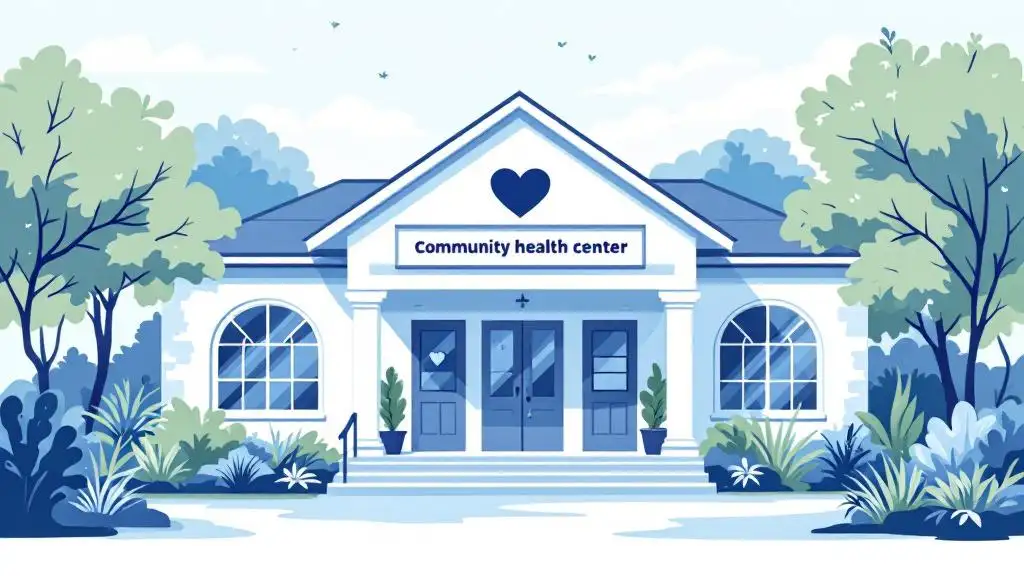Understanding Medicaid Prescriptions
Demystifying Medicaid prescriptions: Access, coverage, and the impact on healthcare. Discover the ins and outs of Medicaid prescription drug programs.

Understanding Medicaid Prescriptions
When it comes to healthcare coverage for individuals with limited income and resources, Medicaid plays a crucial role in ensuring access to necessary medications. In this section, we will delve into the key aspects of Medicaid prescription drug programs, including an overview of the programs, eligibility and coverage, and the Medicaid Drug Rebate Program.

Overview of Medicaid Prescription Drug Programs
Medicaid prescription drug programs encompass the management, development, and administration of systems and data collection necessary to operate various aspects of the Medicaid program. This includes the Medicaid Drug Rebate program, the Federal Upper Limit calculation for generic drugs, and the Drug Utilization Review program.
These programs are designed to ensure that Medicaid beneficiaries have access to necessary medications while controlling costs and promoting appropriate use. By participating in these programs, states can negotiate discounts and rebates with pharmaceutical manufacturers, helping to reduce the financial burden on both beneficiaries and the Medicaid program itself.
Medicaid Eligibility and Coverage
Medicaid is a joint federal and state program that assists in covering medical costs for individuals with limited income and resources. However, it's important to note that each state administers its own Medicaid program, leading to variations in eligibility requirements and benefits across states.
Eligibility for Medicaid is primarily based on income, and in some cases, assets. While the federal government sets certain guidelines, each state has the flexibility to establish its own criteria within those parameters. This means that eligibility requirements can differ from one state to another, resulting in variations in who qualifies for Medicaid coverage.
Medicaid coverage includes a wide range of healthcare services, including prescription drug coverage, hospitalization, outpatient care, preventive services, and more. States also have the option to include additional benefits beyond the federally mandated services, such as eyeglasses, dental services, and more. It's important for individuals to understand the specific coverage and benefits offered by their state's Medicaid program.
Medicaid Drug Rebate Program
The Medicaid Drug Rebate Program is a critical component of Medicaid prescription drug programs. It requires pharmaceutical manufacturers to enter into a rebate agreement with the Centers for Medicare & Medicaid Services (CMS) in order for their drugs to be covered by Medicaid. In return for Medicaid's coverage of their products, manufacturers must provide rebates to the state Medicaid programs Medicaid.gov.
The rebate amounts are based on statutory formulas, and they can vary depending on whether the drug is brand-name or generic. These rebates help to reduce the costs of prescription drugs for Medicaid programs and beneficiaries, ensuring that these medications remain affordable and accessible.
By participating in the Medicaid Drug Rebate Program, states can ensure that their Medicaid beneficiaries have access to a wide range of prescription drugs at affordable prices. The program also helps to control Medicaid spending on prescription medications and promotes the appropriate use of these drugs.
Understanding the basics of Medicaid prescription drug programs, eligibility, and the Medicaid Drug Rebate Program is crucial for individuals who rely on Medicaid for their healthcare coverage. By navigating these programs effectively, Medicaid beneficiaries can access the medications they need while minimizing out-of-pocket expenses.
Access to Medicaid Prescriptions
When it comes to accessing prescription medications through Medicaid, there can be various barriers that individuals may face. Understanding these barriers, as well as the factors that affect Medicaid prescription access, is crucial in developing strategies to improve access and ensure better health outcomes for Medicaid beneficiaries.
Barriers to Accessing Medications
Accessing prescription medications can be challenging for individuals covered by Medicaid. A study found that approximately 29% of participants experienced delays in obtaining their prescribed medications, while 24% were unable to obtain them at all. These barriers can have significant implications for the health and well-being of Medicaid recipients.
Several personal barriers were associated with the inability to obtain medications. These included factors such as health status, federal poverty level, and psychological distress. Financial barriers also played a role, with out-of-pocket medication costs and employment status impacting access to prescription medications. Additionally, the type of health center funding program served as a structural barrier affecting access to medications [1].
Factors Affecting Medicaid Prescription Access
Multiple factors can influence access to prescription medications for Medicaid beneficiaries. These factors include individual circumstances, such as income levels, health conditions, and psychological well-being. Additionally, financial constraints and employment status can impact an individual's ability to afford and access the medications they need.
Structural factors, such as the type of health center funding program, also play a role in prescription access. Medicaid recipients may face challenges in finding healthcare providers who accept their Medicaid coverage, leading to difficulties in obtaining necessary medications.
Strategies for Improving Access to Medications
Addressing the barriers to accessing prescription medications requires multi-level strategies and policy changes. Tailored approaches that consider the specific needs of underserved patient populations are essential. Some potential strategies to improve access to medications for Medicaid beneficiaries include:
- Reducing Financial Barriers: Implementing policies that lower out-of-pocket costs for prescription medications can help alleviate financial burdens on Medicaid recipients.
- Expanding Provider Networks: Encouraging more healthcare providers to accept Medicaid patients can enhance access to medications by ensuring individuals have access to appropriate healthcare professionals who can prescribe and manage their medications.
- Improving Health Literacy: Enhancing health literacy among Medicaid beneficiaries can empower them to navigate the healthcare system effectively. Providing education on medication management, prescription assistance programs, and available resources can help individuals overcome barriers to accessing medications.
- Streamlining Administrative Processes: Simplifying administrative processes related to prescription coverage, such as prior authorizations, can reduce delays and ensure timely access to medications.
By implementing these strategies and addressing the various barriers faced by Medicaid beneficiaries, it is possible to enhance access to prescription medications and improve health outcomes for underserved populations. It requires collaboration between policymakers, healthcare providers, and community organizations to ensure that Medicaid recipients have equitable access to the medications they need for their well-being.
Medicaid Prescription Drug Benefits
Medicaid plays a crucial role in providing access to prescription medications for millions of Americans, including children, non-elderly adults, and people with disabilities. Understanding the key aspects of Medicaid's prescription drug benefits is important for both beneficiaries and healthcare providers.
Medicaid Drug Spending
Medicaid drug spending is a significant component of the program's overall budget. After a sharp spike in 2014 due to specialty drugs and expansion under the Affordable Care Act (ACA), Medicaid drug spending growth has slowed, following a similar pattern to the overall spending trends in the United States [2].
Generic Drugs vs. Brand Name Drugs
When it comes to Medicaid prescriptions, both generic drugs and brand name drugs play important roles. Generic drugs, which have the same active ingredients and effectiveness as their brand name counterparts, are commonly prescribed in Medicaid. In fact, generic drugs accounted for 86% of prescriptions in 2017. However, despite their higher utilization, brand name drugs accounted for 79% of drug spending in Medicaid. This is due to the higher cost associated with brand name drugs compared to their generic alternatives [2].
Reimbursement and Drug Coverage
Medicaid reimburses pharmacies for the cost of drugs dispensed to beneficiaries based on the actual acquisition cost (AAC) for a drug. This reimbursement helps ensure that pharmacies can continue to provide necessary medications to Medicaid beneficiaries.
To ensure access to a wide range of medications, federal law requires manufacturers who want their drugs covered under Medicaid to rebate a portion of drug payments to the government. In return, Medicaid must cover almost all FDA-approved drugs produced by those manufacturers. This requirement helps ensure that Medicaid beneficiaries have access to a comprehensive formulary of medications.
Understanding the dynamics of Medicaid drug spending, the utilization of generic and brand name drugs, and the reimbursement and coverage policies is essential for beneficiaries and healthcare providers alike. By staying informed, individuals can navigate Medicaid prescription benefits effectively, ensuring access to necessary medications for their healthcare needs.
The Impact of Medicaid Prescription Policies
Medicaid prescription policies play a significant role in shaping access to medications and healthcare outcomes for individuals who rely on Medicaid for their healthcare needs. In this section, we will explore the impact of Medicaid prescription policies, specifically focusing on the drug cap policy, changes in prescription drug spending, and the impact on mental health treatment.
The Drug Cap Policy and its Effects
The drug cap policy implemented in Medicaid has had notable effects on prescription drug utilization and access to medications. A study published in JAMA Health Forum found that the drug cap policy was associated with a significant decrease in total prescriptions and prescriptions for drugs to treat mental health conditions among all individuals with disabilities, including those with a serious mental illness [3].
Specifically, the study revealed that the drug cap policy led to a 19.6% decrease in monthly total prescriptions and a 16.5% decrease in prescriptions for drugs to treat mental health conditions among young adults with disabilities in states with the drug cap policy compared to those in states without this policy. Additionally, the policy was associated with a 13.6% increase in inpatient admissions among young adults with disabilities in drug cap states.
However, it is important to note that the drug cap policy was not associated with a decrease in total prescription drug spending among all individuals with disabilities, suggesting that while there was a decrease in utilization, the costs per prescription may have increased. This highlights the complex interplay between prescription drug utilization and spending within the Medicaid system.
Changes in Prescription Drug Spending
While the drug cap policy did not lead to a decrease in total prescription drug spending among all individuals with disabilities, it did result in a 13.3% increase in mean spending per prescription among young adults with disabilities. This increase in spending per prescription may have implications for the affordability and accessibility of medications for individuals who rely on Medicaid.
Understanding the factors contributing to changes in prescription drug spending is crucial for policymakers and healthcare providers to ensure the sustainability of Medicaid programs while maintaining access to necessary medications for individuals in need.
Impact on Mental Health Treatment
Mental health conditions are prevalent among Medicaid beneficiaries, and access to appropriate medications is essential for effective treatment. The drug cap policy, however, was not associated with any changes in quarterly inpatient admissions or emergency department visits among individuals with a serious mental illness.
These findings indicate that the drug cap policy may have unintended consequences for individuals with mental health conditions, potentially affecting their ability to receive timely and appropriate mental health treatment. Further research and policy considerations are necessary to ensure that access to mental health medications is not compromised within the Medicaid system.
Understanding the impact of Medicaid prescription policies is crucial for policymakers, healthcare providers, and individuals who rely on Medicaid for their healthcare needs. By assessing and addressing the effects of these policies, it is possible to improve access to medications and ensure that individuals receive the necessary treatments for their health conditions.
Medicaid and Long-Term Care
When it comes to long-term care, Medicaid plays a crucial role in providing coverage for eligible individuals who meet the income and asset requirements. Medicaid is a joint federal and state program that helps with medical costs for some people with limited income and resources. Let's explore the Medicaid coverage for long-term care, nursing facility costs, and Medicaid benefits for individuals over 65.
Medicaid Coverage for Long-Term Care
Medicaid is a primary payer for long-term care nationwide, filling the gap left by Medicare and most private insurance policies. Long-term care needs, such as nursing home care, are not covered by Medicare. Medicaid steps in to cover the costs when individuals exhaust their savings on healthcare and have no other means to pay for nursing care.
To qualify for Medicaid coverage for long-term care, individuals must meet specific income and asset requirements set by the state. Medicaid covers services such as room and board, nursing care, therapy services, and other necessary services.
Nursing Facility Costs and Medicaid
Nursing facility costs can be significant, making it challenging for individuals to afford long-term care services. Medicaid steps in to provide coverage for nursing facility costs when individuals meet the eligibility criteria. This coverage includes room and board, nursing care, therapy services, and other necessary services.
Medicaid helps ensure that individuals who require nursing home care but cannot afford it on their own have access to the necessary services. By providing coverage for nursing facility costs, Medicaid offers financial relief to those in need, ensuring they receive the care they require.
Medicaid Benefits for Individuals over 65
Medicaid recipients continue to receive benefits after the age of 65 and may also qualify for Medicare. The Medicaid benefits received by individuals may vary by state, but the federal government mandates that certain services must be covered. Medicaid covers services such as prescription drug coverage, medical transportation, dental services, physical therapy, and more.
Unlike Medicare, Medicaid has stricter eligibility requirements that vary by state. When Medicaid recipients reach age 65, they remain eligible for Medicaid and become eligible for Medicare, with Medicaid coverage potentially changing based on income. Medicaid covers a range of services beyond what Medicare offers, ensuring that individuals have access to comprehensive healthcare .
Medicaid benefits for individuals over 65 provide valuable coverage for medical services, including long-term care needs. These benefits help alleviate financial burdens and ensure that eligible individuals receive the necessary care and support as they age.
Understanding the coverage provided by Medicaid for long-term care, nursing facility costs, and individuals over 65 is essential for individuals and families seeking support in managing their healthcare expenses. Medicaid plays a vital role in ensuring that those with limited income and resources have access to the care they need for an improved quality of life.
Medicaid and Long-Term Care
Medicaid Coverage for Long-Term Care
Nursing Facility Costs and Medicaid
Medicaid Benefits for Individuals over 65
Long-term care is a vital aspect of healthcare, particularly for individuals who require ongoing assistance with daily activities due to age, disability, or chronic illness. Medicaid plays a crucial role in providing coverage for long-term care services to eligible individuals.
Medicaid Coverage for Long-Term Care
Medicaid offers coverage for various long-term care services, including nursing home care, home health services, and community-based care. Eligibility for Medicaid long-term care coverage is based on both financial and medical criteria. Individuals must meet specific income and asset requirements, as determined by their state's Medicaid program. Additionally, they must have a medical need for the level of care provided in a long-term care setting.
Nursing Facility Costs and Medicaid
Nursing facility care is one type of long-term care that Medicaid covers. The cost of nursing facility care can vary depending on factors such as location and level of care required. Medicaid can help alleviate the financial burden associated with nursing facility costs for eligible individuals. Medicaid pays for a significant portion of nursing facility care expenses, including room and board, medical services, and personal care assistance.
It's important to note that Medicaid coverage for nursing facility care is subject to specific requirements set by each state. These requirements may include limits on the number of days of coverage or restrictions on the types of facilities covered. Additionally, individuals may be required to contribute a portion of their income towards the cost of care, known as a patient liability or a co-payment.
Medicaid Benefits for Individuals over 65
Medicaid also provides benefits for individuals over the age of 65 who require long-term care. In many states, Medicaid serves as a safety net for older adults who do not have sufficient income or resources to pay for the high costs of long-term care services on their own. Medicaid coverage can help cover the expenses associated with nursing facility care, home health services, and other necessary long-term care supports.
To qualify for Medicaid long-term care benefits as an older adult, individuals must meet the financial eligibility criteria set by their state. They may need to demonstrate that their income and assets fall below certain thresholds. Additionally, they must require a level of care that meets the state's criteria for nursing facility placement or home and community-based services.
Understanding the Medicaid coverage available for long-term care is essential for individuals and families who require ongoing support and assistance. By exploring the options and requirements specific to their state, individuals can access the necessary care and services while minimizing the financial burden associated with long-term care.
References
- https://www.ncbi.nlm.nih.gov/pmc/articles/PMC9326716/
- https://www.kff.org/medicaid/fact-sheet/medicaids-prescription-drug-benefit-key-facts/
- https://jamanetwork.com/journals/jama-health-forum/fullarticle/2781276
- https://www.investopedia.com/articles/pf/07/medicare-vs-medicaid.asp
- https://www.medicaid.gov/medicaid/eligibility/index.html




































































































